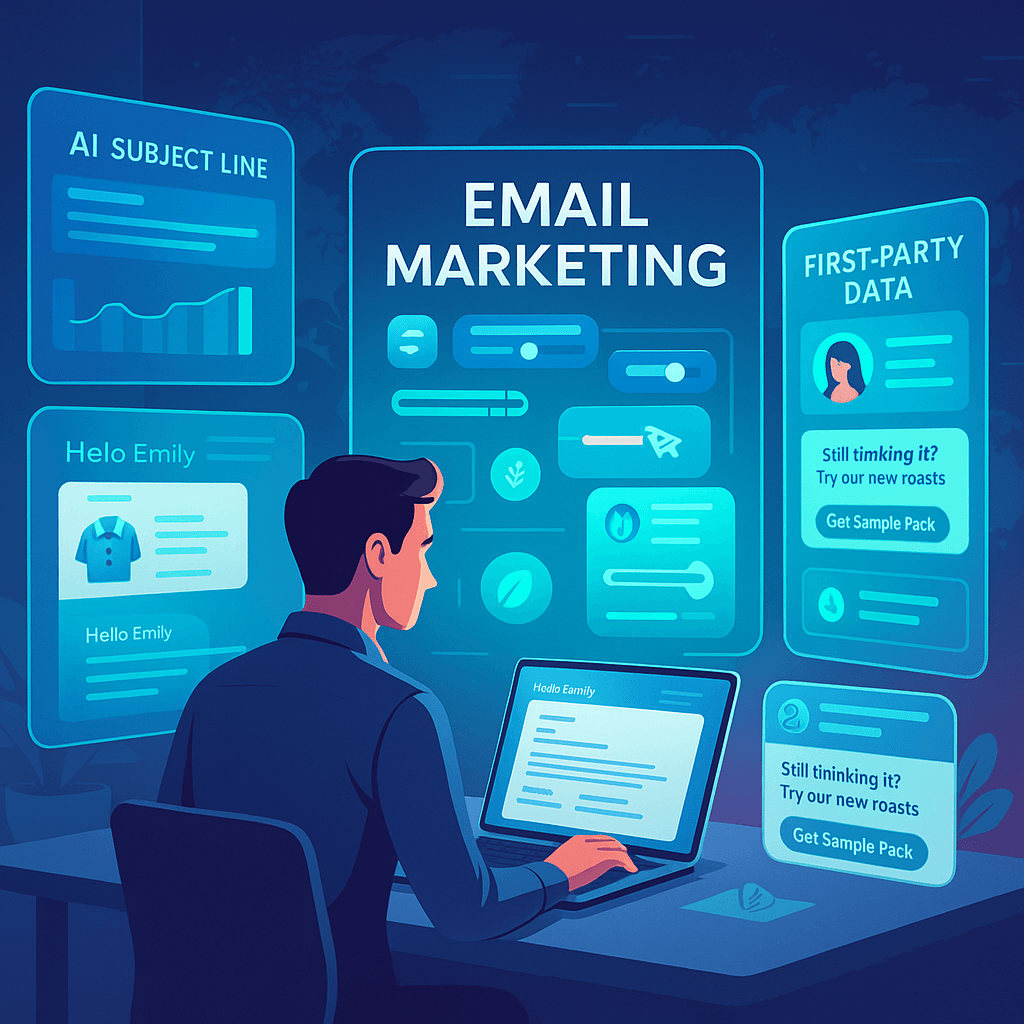Last month, I found myself staring at my company’s quarterly email metrics with a sinking feeling. Despite following all the “proven” tactics, our open rates had plummeted. Sound familiar? You’re not alone.
As someone who’s spent the better part of a decade elbow-deep in digital marketing campaigns, I’ve watched email transform from simple text messages to sophisticated customer journeys. Through countless late nights tweaking subject lines and redesigning templates, I’ve learned that what worked yesterday often falls flat tomorrow.
So I rolled up my sleeves, connected with fellow marketers across three continents, and experimented relentlessly. The result? These seven strategies that breathed new life into our campaigns—and might just save yours too.
1. Harness the Power of AI-powered email (But Keep It Human)
“The first campaign using our new AI-powered email system completely bombed,” confessed James, a marketing director I met at a conference in Chicago. His mistake? Letting the machines take complete control.
The sweet spot combines AI efficiency with human creativity. When our team implemented AI for subject line testing while keeping our authentic voice in the content, our open rates jumped 23% in just three weeks.
The key is using AI as your sous-chef, not the head cook. Let it handle data analysis and optimization while you focus on the creative elements that no algorithm can replicate—your brand’s unique personality and emotional connection with customers.
Pro tip from my own painful experience: Always review AI-generated content before sending. One embarrassing typo taught me this lesson the hard way!
2. First-party data: The New Marketing Gold
Remember Sarah? She’s the customer who abandoned her shopping cart twice before finally purchasing. Under old marketing rules, she’d receive the same generic abandoned cart email as everyone else. But by leveraging first-party data collected through her browsing patterns, wishlists, and previous purchases, we crafted a follow-up that spoke directly to her specific hesitation—shipping costs.
My team now treats first-party data like the precious resource it is. We’ve replaced our old annual survey with micro-moments of connection: a quick two-question poll after purchase, preference toggles in account settings, and celebration of customer milestones.
One of our most successful campaigns last quarter simply asked subscribers which topics they wanted to learn more about—then delivered exactly that content. Simple, but remarkably effective.
3. Interactive Email Experiences That Feel Like Conversations
Last summer, I opened an email from my favorite outdoor gear company that let me customize a hiking backpack—right inside the email. No clicking through to a website, just an intuitive slider tool that changed colors and features as I played with it. I bought the backpack within minutes.
When we implemented similar interactive elements, our click-through rates doubled. But more importantly, these emails started conversations. Customers responded with questions and feedback at triple our normal engagement rate.
Start small—a simple poll or carousel—before diving into more complex AMP implementations. The goal isn’t to show off technical prowess but to create an experience that feels like you’re right there with the customer, helping them make choices.
4. Lifecycle Emails That Feel Surprisingly Prescient
My coffee subscription knew I was about to cancel before I did. Three days before my usual reorder date, they sent an email showcasing three new roasts aligned with my previous preferences—with a sample pack offer. They had noticed my browsing pattern (looking but not buying) and intervened at precisely the right moment.
Map your customer journey not just as you imagine it, but as it actually happens. When we analyzed our purchase data, we discovered a surprising 14-day consideration window for first-time buyers that none of our automation acknowledged. Creating content specifically for this previously invisible stage increased conversion by 17%.
The best lifecycle emails feel like mind reading but are actually just thoughtful observation put into action.
5. The Power of Breathing Room: Minimalist Design
“Our redesign removed 60% of the elements from our promotional emails,” admits Taylor, an ecommerce manager I mentor. “I was terrified we’d lose sales without multiple CTAs and product highlights. Instead, revenue per email increased by 26%.”
I’ve seen this pattern repeatedly. The emails that perform best in 2025 give the eye room to rest. One clear message. One obvious action. White space that allows the content to breathe.
This approach requires courage. It means potentially sending more focused emails rather than trying to accomplish everything in one message. But the clarity pays dividends in engagement.
6. Voice-Optimized Content: The Invisible Opportunity
Last Tuesday, I was cooking dinner when my smart speaker announced, “You have new emails. Would you like me to read them?” Only one of the five emails made any sense when read aloud—and that’s the only one I acted on once my hands were free.
Voice optimization remains surprisingly overlooked. Test yours by closing your eyes while a colleague reads your email aloud. Does it make sense without visual context? Would someone remember the call to action?
Simple adjustments make huge differences: front-loading the main message, using natural language, and creating obvious audio cues for the next step (“Just reply YES to confirm your appointment”).
7. Sustainable Email Marketing That Reflects Your Values
“I unsubscribed from everything during digital declutter month,” a friend told me over coffee. “Then slowly resubscribed only to brands that respected my time and attention.” This sentiment perfectly captures today’s consumer mindset.
Sustainability in email marketing isn’t just about reducing digital carbon footprint (though optimizing image sizes and embracing dark mode designs helps). It’s about sustaining the relationship through respectful practices.
Our most successful change? Moving from standard weekly sends to personalized frequency based on engagement patterns. Some subscribers now receive emails twice weekly, others monthly—all based on their actual behavior, not our marketing calendar.
Best Practices for 2025: Lessons from the Trenches
Through hundreds of A/B tests and countless cups of coffee, I’ve found certain Best Practices for 2025 remain non-negotiable for email marketing success. These aren’t just theoretical suggestions—they’re battle-tested approaches that have survived the rapidly evolving digital landscape:
- Clean your list regularly (our quarterly purge initially scared our CMO but improved deliverability by 14%)
- Test relentlessly across devices (what works on desktop often fails on mobile)
- Make unsubscribing easy (counter-intuitive, but it builds trust with those who stay)
- Measure what matters to your business (open rates mean nothing if they don’t drive revenue)
- Connect email insights with other channels (our best-performing email subject lines now inform our social media headlines)
Implementing these Best Practices for 2025 has transformed not just our metrics but our entire approach to customer communication. When we committed to these principles last January, we saw engagement metrics improve across the board within just six weeks.
The email marketing landscape continues evolving at breakneck speed, but one truth remains constant: genuine connection cuts through the noise. These strategies work because they put the human experience at the center of each sentence.
Which approach will you try first? I’d love to hear about your results.




